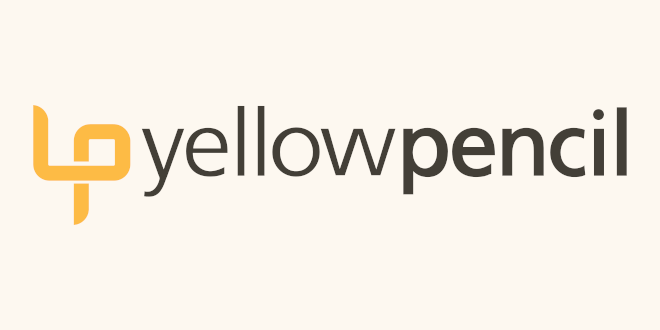
- Internet
- 21.11.2018
- EN
yellowpencil: What is Enterprise Web Content?
A 3 minutes read, written by Paul
February 6, 2014

At Yellow Pencil Edmonton, we have a floor to ceiling vinyl print of William Shatner’s face as the wallpaper for one of our boardrooms. Why? Because he’s The Shat. You don’t even need a reason for why, it’s William Shatner. Shuddup.
I suppose if you really want to get into it though, he’s Canadian in real life, and professionally his thing is going where no one has gone before. We can relate to both of those traits. Plus he does spoken-word, art-pop records with Ben Folds. Again: Shuddup.
But let’s get back to the “where no one has gone before”. We take on big projects here at YP. In fact, if there’s one thing you can say about the theme that runs through our projects it’s that we spend most of our time doing things where we often can’t find a precedent. We create new processes where we can’t find an existing best practice. We establish service models that didn’t exist but needed to. We integrate applications that haven’t spoken to each other before. We work with tools that aren’t common territory. We take on big project for big customers.
This brings us to an important word: Enterprise. A lot of the software that we work with and most of the customers that we work with get labelled with this word. It gets used to mean “Big”, “Expensive”, “Complicated”. Unfortunately, this really goes against our character as a company because although we work on “Big” we focus on personal relationships and small details. We strive to be odd, creative, solutions-focussed, efficient, people-oriented, not “Expensive and Complicated”.
We’ve decided that we really need to work on our definition of Enterprise and come up with something that works for us and for our clients. Here’s what we came up with:
Enterprise is:
“A business or organization using an entrepreneurial spirit to undertake a bold, web-based project.”
This resonates with us. Our customers may be governments, cities, airports, transit authorities, financial service providers, or professional associations, but without exception they are trying to do something bold on the web. They are being enterprising. They are going where they have not gone before, and often where they can’t find a lot of peers who have paved the way. This is what we do.
So Enterprise for us is key. And you know who was the Captain of the Enterprise? Shatner. See? I was going somewhere with this.
Everything starts with Content...
Enterprise Web Content is a practice that brings together content strategists, user experience designers, strategic planners, subject matter experts, developers, and most of all content creators. It is a multi-disciplinary practice and one that thrives on collaboration between our team and our clients.
A project team for us integrates Yellow Pencil people who
- think about editorial and organizational strategy,
- quantify, evaluate, and measure content,
- plan information architecture and visual hierarchy,
- configure analytics and review user behaviour,
- work with CMS tools to create a publishing platform that can be refactored and expanded,
- train content writers on how to write great content, and then how to write great content within their website platform or chosen specification (like DITA),
- test and revise the tools we give customers.
… and everything ends up with People
Our purpose is to help complex organizations communicate effectively with individual humans. This sounds straightforward, but take a moment and draw a little illustration in your mind of a corporation with 12,000 employees trying to have an effective conversation with one customer. It’s hard, just because people get messy and awkward in large groups. And it’s harder because really we’re enabling a whole range of individual people within a company to produce content.
Expand the illustration in your mind so that it’s actually 300 of those 12,000 employees simultaneously all on the phone with that one customer, with the telephone wires all getting tangled... OK, forget it - can someone on the design team just draw that picture?

"Uhhh...Thanks?"
Our work is to create plans, designs, systems, and tools so that each person within the organizations we serve can communicate both as part of the entire organization, while having effective conversations with each customer. You see? Helping organizations communicate effectively with individual humans.
Enterprise Web Content
So let’s talk in more detail about why it is that Enterprise Web Content is so complex and so different from just regular old web content, which is challenging enough.
We’ve identified six qualities that make Enterprise Web Content complex. Enterprise Web Content is often:
- Regulated – our clients may have to follow provincial, state, or federal law with regards to what content appears on their site, what messages they can communicate, and how they manage content lifecycle. They may have strong privacy or Payment Card Industry (PCI) constraints on their content.
- In large volume – our clients may manage large quantities of content at a high cost. Volume creates a need for ongoing measurement, information architecture, search configuration, content strategy, and user experience design.
- Multi-author – our clients have complex needs for workflow, training, author interface design, and governance consulting. Many people and tiers of content creators and approvers leads to complexity – creating a web publishing system that can be operated by humans over time is our specialty.
- Workflow or Business Process driven – our clients’ content requires business process analysis, especially where service-oriented content is involved (i.e. an application for a building permit or a loan application). When content isn’t just a one way publish, but it becomes transactional in nature, then we need to ensure that all the systems that support and connect to the web channel are properly understood, designed, and configured.
- International – our clients communicate with people around the world, in many languages, and in many cultural contexts. Managing content that is not only accurate for the organization, but is also authentic for the organization’s audience requires understanding and system design so that content in multiple versions and languages can be sustained.
- Value-driven – for many of our clients, information and content itself is value-driven. For a government, providing the right information or data to the widest possible audience is often the business objective. For a market-driven organization, getting the right message to the right customer in the right context is the business objective. For a regulated or financial industry, being able to audit any message at a point in time and be sure that it meets all legal requirements is a business objective driven by risk management. But in every case, content drives business value for our customers.
Beyond just being intrinsically complex, the practice of managing enterprise web content requires specialized tools, interfaces, and skills and often requires systems thinking or process automation. And we all know what Bill Gates said about automation:
“The first rule of any technology used in a business is that automation applied to an efficient operation will magnify the efficiency. The second is that automation applied to an inefficient operation will magnify the inefficiency.”
Ok, dry but true.
We divide content into seven types, based on its qualities and the types of tools or systems required to manage that content.
- Editorial – written page copy, unstructured information, marketing materials, news. Usually requires a rich text editor interface or word processor style editing environment.
- Technical – structured editorial information like manuals, documentation, policies. May require a unique editorial interface, or use structured XML (such as DITA).
- Social – user generated content like comments, content from external platforms, serialized content like status updates and blog articles. Is often created in third party platforms and accessed via APIs.
- Data – structured information, often stored in applications or databases, spatial information, event information, and potentially XML. Is usually created by external systems (i.e. a CRM system or Google Maps), or accessed programmatically.
- Media – typically binary files like images, video, audio. Media is often created in specialized applications, has unique storage and metadata requirements, and usually requires unique presentational tools and has accessibility implications.
- Metadata – Dublin Core, HTML metadata, analytics, contextual or statistical information. Metadata may be stored in multiple systems, can be embedded within binary file formats, or may be stored in external systems. May be generated automatically.
- Documents – Office, CAD, PDF, scans, proprietary text formats, presentations. Document Management is a complete practice in its own right, often called Enterprise Content Management. However a successful web channel needs to be connected to the process of document management.
Enterprise Web Content is complicated but needs to be managed by regular humans who just happen to be subject matter experts, who usually have other jobs they are supposed to be doing. Part of the craft is bringing all these tools, interfaces, and systems together in a way that makes to work of managing content straightforward, or at least achievable by the average person.
Who would DO this?
Yellow Pencil would. We see Enterprise Web Content as a unique practice and it’s something that we take seriously. We’ve built our whole team and practice around it. It requires systems thinking and automation. It involves talking to people and negotiating solutions. It means working with big, messy applications and doing a LOT of testing. It requires user oriented design at every stage. It takes content strategy and information architecture. It demands measurement and constant iteration. But most of all, it involves helping people to get better and communicating with people. And that is a pretty rewarding outcome.
So what bold project are you undertaking? Where are you about to go that you’ve never gone before? I’d be interested in talking to you. Send me an email at paul@yellowpencil.com.
And what do you think of the way we’ve defined Enterprise Web Content?
Would Shatner be proud?
Or rather… Would. Shatner. Be. Proud?
We welcome your comments.
The Author
Paul Bellows
Responsible for strategy and a founder of Yellow Pencil, Paul consults with our future and current clients to understand what their digital success looks like, and then helps to shape work that moves toward that vision.
Paul is a dedicated but clumsy hockey player, a once and future songwriter, and a collector of guitars that don’t get played enough.
Source: What is Enterprise Web Content?
© copyright 2014 by yellowpencil